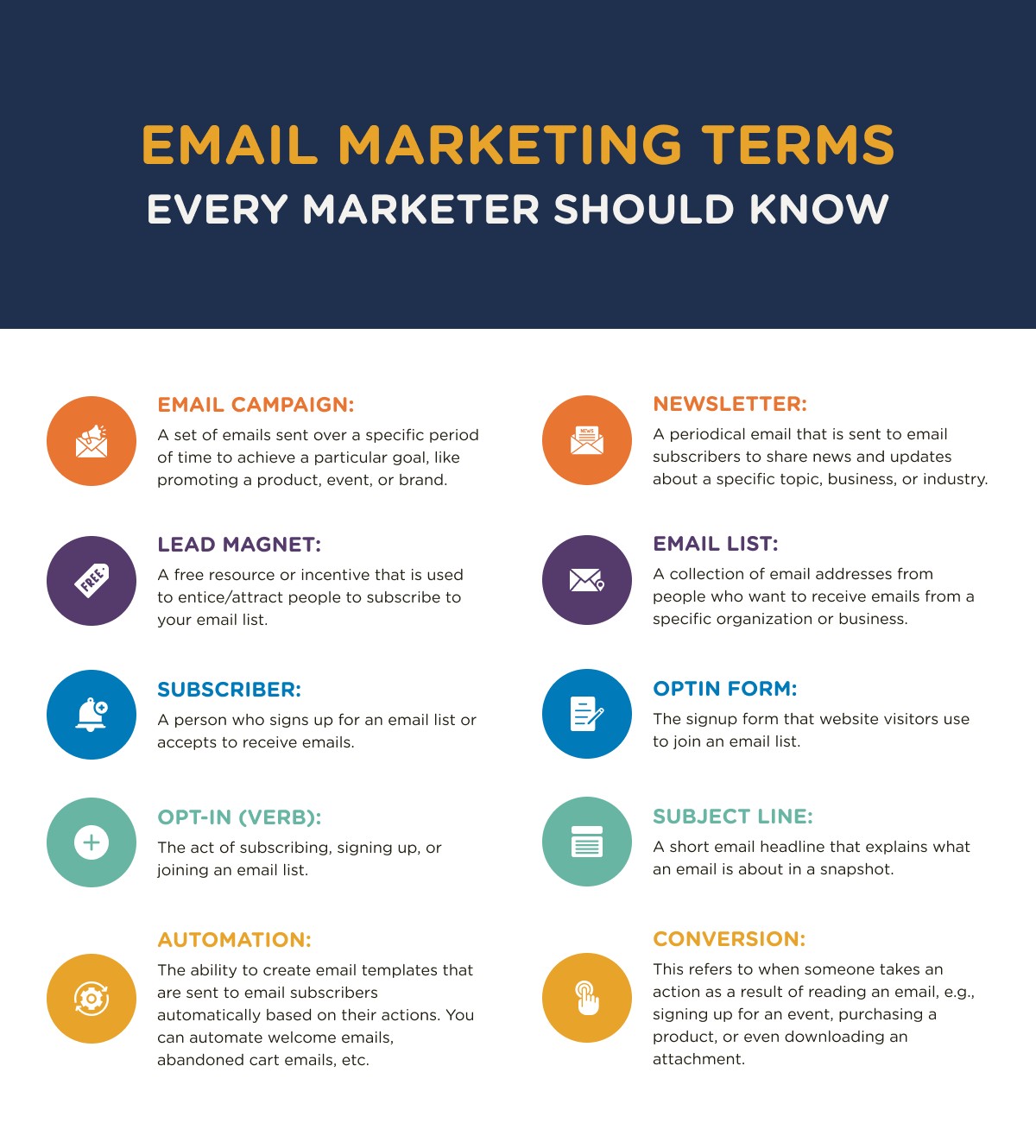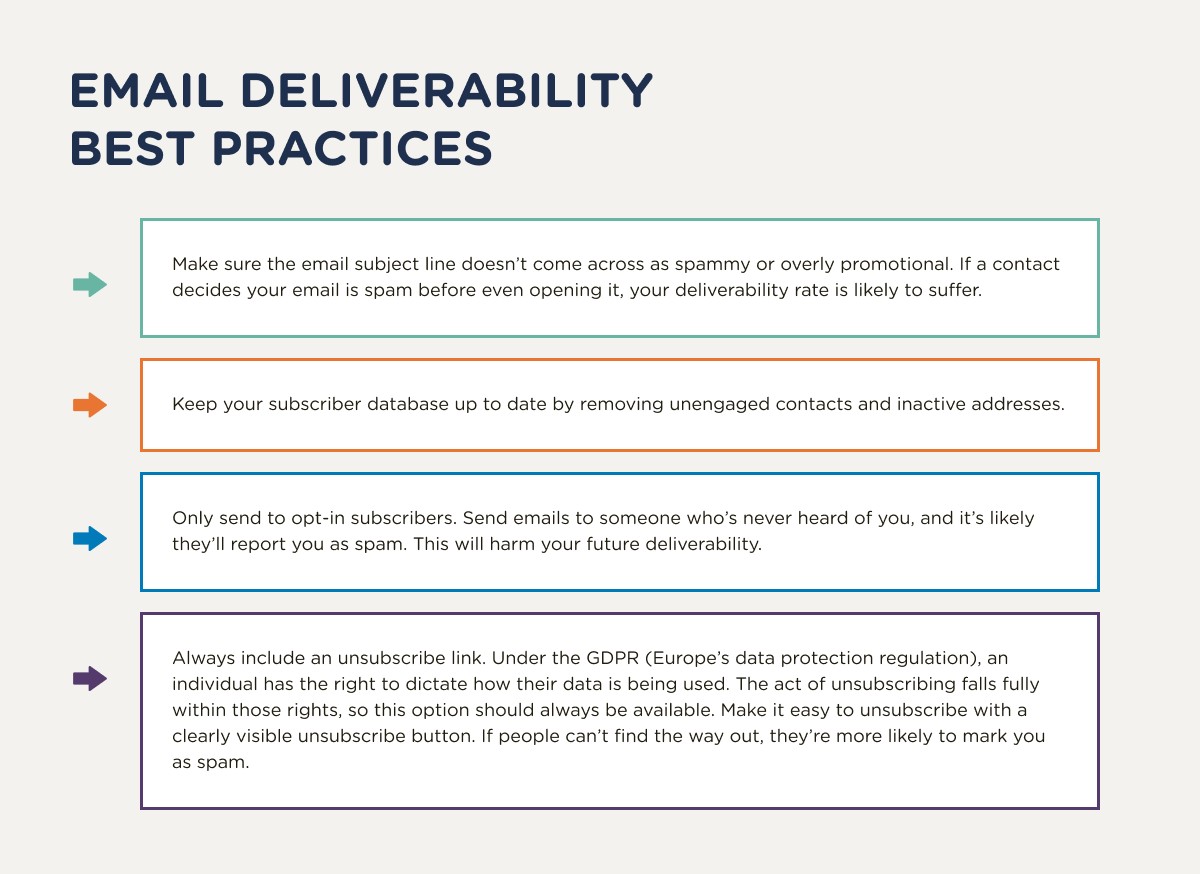Email marketing, a digital strategy, involves using email to connect with potential and existing customers. Have questions about how to use email to grow your business? WHAT.EDU.VN offers free answers and expert advice to help you succeed. Learn about email campaigns, subscriber engagement, and automated messaging.
Email marketing is a powerful digital marketing strategy centered around using email to nurture relationships with prospects and customers. It involves sending targeted messages to a specific audience to promote products or services, share news and updates, or build brand loyalty. Think of it as a direct line of communication to your audience’s inbox.
Email marketing isn’t just about sending out mass emails. It’s a strategic approach that requires careful planning, execution, and analysis. When done correctly, it can be a highly effective way to drive sales, increase brand awareness, and build lasting customer relationships.
Key Aspects of Email Marketing:
- Building an Email List: Gathering email addresses from individuals who have given you permission to contact them. This can be done through website forms, signup sheets, or other opt-in methods.
- Segmentation: Dividing your email list into smaller groups based on specific criteria such as demographics, interests, or purchase history. This allows you to send more targeted and relevant messages to each group.
- Personalization: Tailoring your email messages to individual recipients. This can include using their name, referencing past purchases, or providing content that is relevant to their interests.
- Automation: Using software to automatically send emails based on specific triggers, such as when someone signs up for your email list or makes a purchase.
- Analysis: Tracking the performance of your email campaigns to see what’s working and what’s not. This includes monitoring metrics such as open rates, click-through rates, and conversion rates.
2. Why is Email Marketing Important?
In today’s digital landscape, email marketing remains a cornerstone of effective marketing strategies. Its importance stems from its ability to deliver personalized, targeted messages directly to potential and existing customers, fostering engagement and driving conversions. Unlike social media platforms where content visibility is subject to algorithms, email marketing provides a direct line of communication to your audience’s inbox.
Here’s a detailed breakdown of why email marketing is so crucial:
- Direct Communication: Email provides a direct line of communication with your audience, ensuring that your messages reach their intended recipients.
- Targeted Messaging: Email marketing allows you to segment your audience and send targeted messages that are relevant to their interests and needs.
- Personalization: You can personalize your email messages to individual recipients, making them feel valued and understood.
- Measurable Results: Email marketing provides detailed analytics that allow you to track the performance of your campaigns and optimize your strategies.
- Cost-Effective: Compared to other marketing channels, email marketing is relatively inexpensive, making it an ideal option for small businesses and startups.
- High ROI: Email marketing consistently delivers a high return on investment, making it one of the most effective marketing channels available.
- Building Relationships: Email marketing allows you to build lasting relationships with your customers by providing them with valuable content and personalized offers.
- Driving Sales: Email marketing can be used to drive sales by promoting products or services, offering discounts, and providing exclusive deals to subscribers.
- Increasing Brand Awareness: Email marketing helps to increase brand awareness by keeping your company top-of-mind with your audience.
- Generating Leads: Email marketing can be used to generate leads by offering valuable content in exchange for email addresses.
3. Understanding Email Marketing Terminology
Navigating the world of email marketing requires understanding its unique terminology. Here’s a glossary of essential terms to help you get started:
| Term | Definition |
|---|---|
| A/B Testing | Comparing two versions of an email to see which performs better. |
| Automation | Using software to automatically send emails based on specific triggers. |
| Bounce Rate | The percentage of emails that could not be delivered to the recipient’s inbox. |
| Call to Action (CTA) | A button or link that encourages recipients to take a specific action, such as “Shop Now” or “Learn More”. |
| Click-Through Rate (CTR) | The percentage of recipients who clicked on a link in your email. |
| Conversion Rate | The percentage of recipients who completed a desired action, such as making a purchase or filling out a form. |
| Email List | A database of email addresses that you use to send marketing messages. |
| Email Service Provider (ESP) | A company that provides software and services for sending and managing email campaigns. |
| Hard Bounce | An email that could not be delivered due to a permanent reason, such as an invalid email address. |
| Open Rate | The percentage of recipients who opened your email. |
| Opt-In | The process of obtaining permission from individuals to send them email marketing messages. |
| Segmentation | Dividing your email list into smaller groups based on specific criteria. |
| Soft Bounce | An email that could not be delivered due to a temporary reason, such as a full inbox. |
| Spam | Unsolicited or unwanted email messages. |
| Unsubscribe Rate | The percentage of recipients who opted out of receiving future emails from you. |



4. Benefits of Email Marketing
Email marketing offers a plethora of benefits for businesses of all sizes. From cost-effectiveness to targeted messaging, here’s a comprehensive look at the advantages of incorporating email marketing into your overall strategy:
- Cost-Effectiveness: Email marketing is one of the most cost-effective marketing channels available. It allows you to reach a large audience without breaking the bank.
- Targeted Messaging: Email marketing allows you to segment your audience and send targeted messages that are relevant to their interests and needs.
- Personalization: You can personalize your email messages to individual recipients, making them feel valued and understood.
- Measurable Results: Email marketing provides detailed analytics that allow you to track the performance of your campaigns and optimize your strategies.
- Direct Communication: Email provides a direct line of communication with your audience, ensuring that your messages reach their intended recipients.
- High ROI: Email marketing consistently delivers a high return on investment, making it one of the most effective marketing channels available.
- Building Relationships: Email marketing allows you to build lasting relationships with your customers by providing them with valuable content and personalized offers.
- Driving Sales: Email marketing can be used to drive sales by promoting products or services, offering discounts, and providing exclusive deals to subscribers.
- Increasing Brand Awareness: Email marketing helps to increase brand awareness by keeping your company top-of-mind with your audience.
- Generating Leads: Email marketing can be used to generate leads by offering valuable content in exchange for email addresses.
- Automation: Email marketing can be automated to save time and effort, allowing you to focus on other aspects of your business.
- Global Reach: Email marketing allows you to reach a global audience, expanding your business opportunities.
5. How Does Email Marketing Work?
Email marketing operates through a series of interconnected steps, each playing a crucial role in the success of your campaigns. From building your email list to analyzing results, here’s a breakdown of the email marketing process:
- Building an Email List: The first step in email marketing is to build an email list of people who have given you permission to contact them. This can be done through website forms, signup sheets, or other opt-in methods.
- Choosing an Email Service Provider (ESP): An ESP is a company that provides software and services for sending and managing email campaigns. Popular ESPs include Mailchimp, Constant Contact, and Sendinblue.
- Creating Email Content: The next step is to create engaging and relevant email content that will resonate with your audience. This includes writing compelling subject lines, crafting informative body copy, and designing visually appealing layouts.
- Segmenting Your Email List: Segmenting your email list means dividing it into smaller groups based on specific criteria such as demographics, interests, or purchase history. This allows you to send more targeted and relevant messages to each group.
- Personalizing Your Emails: Personalizing your emails means tailoring them to individual recipients. This can include using their name, referencing past purchases, or providing content that is relevant to their interests.
- Automating Your Email Campaigns: Automating your email campaigns means using software to automatically send emails based on specific triggers, such as when someone signs up for your email list or makes a purchase.
- Sending Your Emails: Once you have created your email content, segmented your list, and personalized your emails, you are ready to send them out.
- Tracking Your Results: The final step in email marketing is to track the performance of your campaigns to see what’s working and what’s not. This includes monitoring metrics such as open rates, click-through rates, and conversion rates.
6. Types and Examples of Emails
Email marketing encompasses a wide variety of email types, each serving a distinct purpose in engaging with your audience and achieving your business goals. Here’s an overview of common email types, along with examples to illustrate their application:
-
Welcome Emails: These emails are sent to new subscribers to welcome them to your list and introduce them to your brand.
- Example: “Welcome to [Your Company]! Thanks for subscribing. Here’s a special discount code for your first purchase.”
-
Newsletter Emails: Newsletters are sent regularly to keep subscribers informed about your company’s news, products, and services.
- Example: “Our monthly newsletter features the latest industry trends, product updates, and exclusive offers.”
-
Promotional Emails: These emails are used to promote specific products, services, or events.
- Example: “Don’t miss our Black Friday sale! Get up to 70% off select items.”
-
Transactional Emails: Transactional emails are triggered by a specific action, such as a purchase or a signup.
- Example: “Thank you for your order! Here’s your order confirmation and tracking information.”
-
Abandoned Cart Emails: These emails are sent to customers who have added items to their cart but haven’t completed the purchase.
- Example: “Did you forget something? Your cart is waiting for you with free shipping.”
-
Re-engagement Emails: These emails are sent to inactive subscribers to encourage them to re-engage with your brand.
- Example: “We miss you! Here’s a special offer to get you back on board.”
-
Survey Emails: Survey emails are used to gather feedback from customers about their experiences with your company.
- Example: “We value your opinion! Please take our short survey to help us improve our services.”
7. Email Marketing Best Practices
To maximize the effectiveness of your email marketing campaigns and avoid common pitfalls, it’s essential to adhere to established best practices. Here’s a guide to the most important practices in email marketing:
- Obtain Explicit Consent: Always obtain explicit consent from individuals before adding them to your email list. This can be done through a double opt-in process, where subscribers must confirm their subscription by clicking on a link in a confirmation email.
- Segment Your Email List: Segmenting your email list allows you to send more targeted and relevant messages to each group, increasing engagement and conversion rates.
- Personalize Your Emails: Personalizing your emails makes them feel more relevant and engaging to individual recipients.
- Write Compelling Subject Lines: Your subject line is the first thing recipients see, so it’s crucial to make it attention-grabbing and relevant to the email content.
- Create High-Quality Content: Your email content should be informative, engaging, and valuable to your audience.
- Use a Clear Call to Action: Your emails should have a clear call to action that tells recipients what you want them to do.
- Optimize for Mobile Devices: More than half of all emails are opened on mobile devices, so it’s essential to ensure that your emails are optimized for mobile viewing.
- Test Your Emails: Before sending your emails to your entire list, always test them to ensure that they look good and function properly.
- Track Your Results: Tracking the performance of your email campaigns allows you to see what’s working and what’s not, and make adjustments accordingly.
- Comply with Email Marketing Laws: Familiarize yourself with email marketing laws such as GDPR and CAN-SPAM to ensure that your campaigns are compliant.
- Clean Your Email List Regularly: Remove inactive subscribers to improve deliverability and engagement rates.
- Avoid Spam Trigger Words: Be cautious of using words that may flag your email as spam, such as “free,” “guarantee,” or excessive exclamation points.
8. Measuring Email Marketing Success
Tracking the right metrics is essential for gauging the success of your email marketing campaigns and identifying areas for improvement. Here’s a list of key email marketing metrics that you should be monitoring:
- Open Rate: The percentage of recipients who opened your email. A high open rate indicates that your subject lines are effective and your audience is engaged.
- Click-Through Rate (CTR): The percentage of recipients who clicked on a link in your email. A high CTR indicates that your email content is relevant and engaging.
- Conversion Rate: The percentage of recipients who completed a desired action, such as making a purchase or filling out a form. A high conversion rate indicates that your email campaigns are effective at driving results.
- Bounce Rate: The percentage of emails that could not be delivered to the recipient’s inbox. A high bounce rate indicates that your email list may contain invalid or inactive email addresses.
- Unsubscribe Rate: The percentage of recipients who opted out of receiving future emails from you. A high unsubscribe rate indicates that your email content may not be relevant or engaging to your audience.
- Return on Investment (ROI): The amount of revenue generated by your email marketing campaigns compared to the cost of running those campaigns. A high ROI indicates that your email marketing campaigns are profitable.
- List Growth Rate: The rate at which your email list is growing. A positive list growth rate indicates that you are attracting new subscribers and expanding your reach.
9. Email Marketing Automation
Email marketing automation involves using software to automatically send emails based on specific triggers, such as when someone signs up for your email list or makes a purchase. Automation can save you time and effort, while also improving the effectiveness of your email marketing campaigns.
Here are some examples of how you can use email marketing automation:
- Welcome Emails: Automatically send a welcome email to new subscribers when they sign up for your email list.
- Thank You Emails: Automatically send a thank you email to customers after they make a purchase.
- Abandoned Cart Emails: Automatically send an email to customers who have added items to their cart but haven’t completed the purchase.
- Re-engagement Emails: Automatically send an email to inactive subscribers to encourage them to re-engage with your brand.
- Birthday Emails: Automatically send a birthday email to subscribers on their birthday.
- Anniversary Emails: Automatically send an anniversary email to subscribers on the anniversary of their subscription.
- Lead Nurturing Campaigns: Automatically send a series of emails to leads to nurture them through the sales funnel.
10. Email Marketing and GDPR/CAN-SPAM Compliance
Complying with email marketing laws such as GDPR (General Data Protection Regulation) and CAN-SPAM (Controlling the Assault of Non-Solicited Pornography And Marketing Act) is crucial for protecting your business and maintaining a positive reputation.
Here’s a summary of the key requirements of GDPR and CAN-SPAM:
-
GDPR:
- Obtain explicit consent from individuals before collecting and using their personal data.
- Provide individuals with the right to access, rectify, and erase their personal data.
- Implement appropriate security measures to protect personal data.
- Notify data protection authorities of any data breaches.
-
CAN-SPAM:
- Don’t use false or misleading header information.
- Don’t use deceptive subject lines.
- Identify your message as an advertisement.
- Tell recipients where you’re located.
- Tell recipients how to opt out of receiving future emails from you.
- Honor opt-out requests promptly.
- Monitor what others are doing on your behalf.
Email marketing is an indispensable tool in the digital marketing toolbox, offering a direct and effective way to connect with your audience. By understanding the fundamentals, best practices, and legal requirements, you can leverage email marketing to achieve your business goals and build lasting customer relationships.
Have more questions about email marketing or need help crafting a successful strategy? Don’t hesitate to ask WHAT.EDU.VN! Our experts are ready to provide free answers and guidance to help you navigate the world of email marketing and achieve your business objectives. Contact us today at 888 Question City Plaza, Seattle, WA 98101, United States, Whatsapp: +1 (206) 555-7890, or visit our website at what.edu.vn to submit your questions. We’re here to help you succeed!
